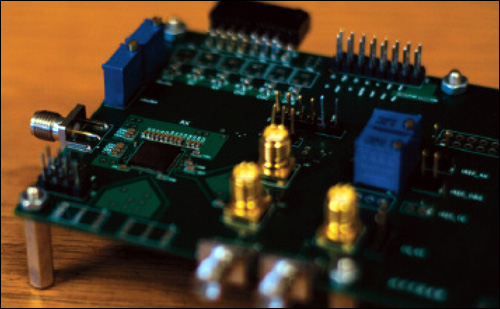Richard Reid boarded an American Airlines flight from Paris to Miami on Dec. 22, 2001, with explosives packed in the soles of his shoes. He attempted to detonate the explosives but was subdued by other passengers. In the not-too-distant future, tiny wireless sensors deployed throughout airports might be able to “sniff out” the chemicals in the explosives of such would-be bombers.
A team of researchers at Georgia Tech Research Institute (GTRI) has developed sensors that can be linked to radio frequency identification transponders, which would enable them to alert security wirelessly if they detected any of a variety of chemical vapors they are designed to pick up. “We can make the sensors at very low cost, and they consume very little power, so they can be scattered throughout an environment,” says Xiaojuan (Judy) Song, a GTRI senior research scientist who is a principal investigator on the project. “They could provide an early-detection system for better security.”

Song is a chemical engineer who has researched wired chemical sensors. She teamed up with Christopher Valenta, a GTRI research engineer and co-principal investigator on the project, who has been working with RFID systems for the past seven years. Wireless sensors are cheaper to deploy, because they do not require running cable throughout an environment.
The sensors have a thin film made of carbon nanotubes and other materials. They are designed to detect specific chemicals, such as ammonia, which is present in most explosives. When chemical molecules land on the film, they either attract electrons from the carbon or the carbon attracts electrons from the molecules. This changes the resistance in the chemical sensor and that change can be communicated to the chip in the RFID transponder through a wired input port. The RFID transponder can then transmit that information to a reader wirelessly. Software would gather data from dozens of sensors and use pattern recognition to determine the presence of a chemical and reduce the likelihood of false alarms.
Song and Valenta developed a prototype sensor that is 10 centimeters square, but their goal is to improve the design so a multiple-sensor array and an RFID chip can be squeezed into a 1-millimeter-square device. The current prototype uses a battery-assisted 5.8 GHz tag developed by GTRI. The team chose 5.8 GHz because it allows for a smaller microchip, faster data transfer rates and better performance around metal, but Valenta says, “we could easily link the sensor to a completely passive 5.8 GHz tag or a commercially available 915 MHz passive tag.”
Low-cost sensors that could be read by off-the-shelf and widely deployed passive ultrahigh-frequency RFID readers could also be used to monitor air pollution, detect vapors emitted by ripening fruit and vegetables to monitor freshness, and detect hazardous gases in chemical and power plants. “The sensors could be made small enough that people could wear them,” Song says, “and they would alert you if you were exposed to small amounts of potentially harmful gases.”
The researchers tested the prototype in a mock airport checkpoint. The sensor detected a specific chemical being targeted despite the presence of many other harmless chemicals, and the RFID component transmitted the sensors’ readings. They have begun talking to companies interested in the technology. With appropriate funding, Song says, wireless sensors based on the team’s work could be available commercially in three to five years. And then we can all sleep a little more soundly.

